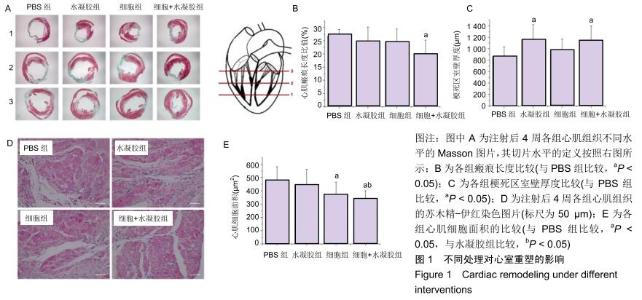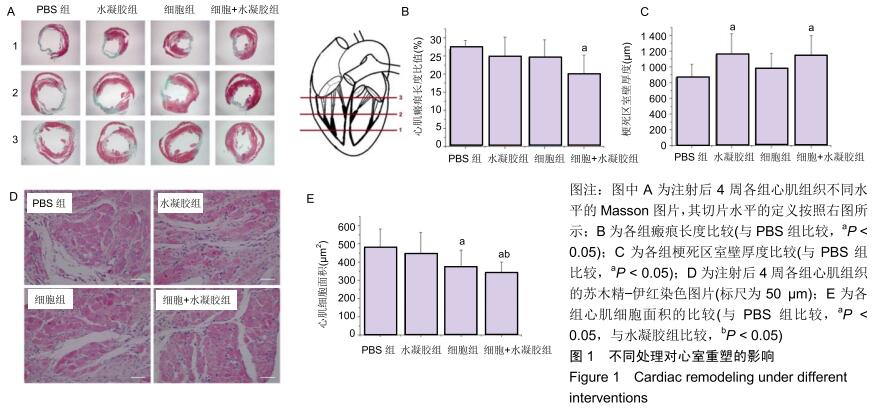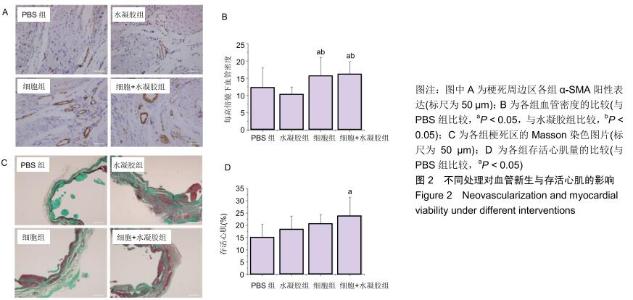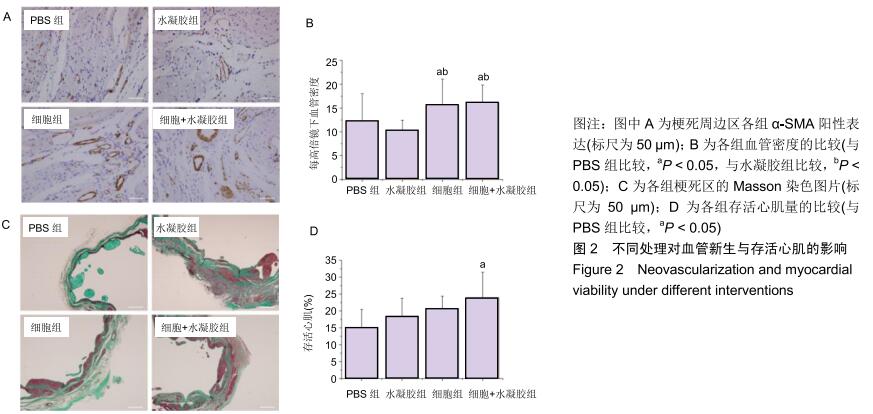|
[1] RUSSO V, YOUNG S, HAMILTON A, et al. Mesenchymal stem cell delivery strategies to promote cardiac regeneration following ischemic injury. Biomaterials. 2014;35(13):3956-3974.
[2] SUTTON MG, SHARPE N. Left ventricular remodeling after myocardial infarction: pathophysiology and therapy. Circulation. 2000;101(25): 2981-2988.
[3] LI Z, HU S, CHENG K. Chemical Engineering of Cell Therapy for Heart Diseases. Acc Chem Res. 2019;52(6):1687-1696.
[4] SHAFIQ M, LEE SH, JUNG Y, et al. Strategies for recruitment of stem cells to treat myocardial infarction. Curr Pharm Des. 2015;21(12): 1584-1597.
[5] RABBANI S, SOLEIMANI M, SAHEBJAM M, et al. Simultaneous Delivery of Wharton's Jelly Mesenchymal Stem Cells and Insulin-Like Growth Factor-1 in Acute Myocardial Infarction. Iran J Pharm Res. 2018; 17(2):426-441.
[6] KLYACHKIN YM, IDRIS A, RODELL CB, et al. Cathelicidin Related Antimicrobial Peptide (CRAMP) Enhances Bone Marrow Cell Retention and Attenuates Cardiac Dysfunction in a Mouse Model of Myocardial Infarction. Stem Cell Rev Rep. 2018;14(5):702-714.
[7] SANGANALMATH SK, BOLLI R. Cell therapy for heart failure: a comprehensive overview of experimental and clinical studies, current challenges, and future directions. Circ Res. 2013;113(6):810-834.
[8] HASAN A, KHATTAB A, ISLAM MA, et al. Injectable Hydrogels for Cardiac Tissue Repair after Myocardial Infarction. Adv Sci (Weinh). 2015; 2(11):1500122.
[9] YAO Y, LIAO W, YU R, et al. Potentials of combining nanomaterials and stem cell therapy in myocardial repair. Nanomedicine (Lond). 2018; 13(13):1623-1638.
[10] UITTERDIJK A, GROENENDIJK BCW, GORSSE-BAKKER C, et al. Time course of VCAM-1 expression in reperfused myocardial infarction in swine and its relation to retention of intracoronary administered bone marrow-derived mononuclear cells. PLoS One. 2017;12(6):e0178779.
[11] 商青青,周建业,李凯,等.透明质酸水凝胶包裹骨髓间充质干细胞改善大鼠心肌梗死后心功能[J].中国组织工程研究, 2018,22(5):675-679.
[12] ZHOU Q, ZHOU JY, ZHENG Z, et al. A novel vascularized patch enhances cell survival and modifies ventricular remodeling in a rat myocardial infarction model. J Thorac Cardiovasc Surg. 2010;140(6): 1388-1396.
[13] FISHBEIN MC, MACLEAN D, MAROKO PR. Experimental myocardial infarction in the rat: qualitative and quantitative changes during pathologic evolution. Am J Pathol. 1978;90(1):57-70.
[14] DURAN JM, MAKAREWICH CA, SHARP TE, et al. Bone-derived stem cells repair the heart after myocardial infarction through transdifferentiation and paracrine signaling mechanisms. Circ Res. 2013;113(5):539-552.
[15] KATARZYNA R. Adult Stem Cell Therapy for Cardiac Repair in Patients After Acute Myocardial Infarction Leading to Ischemic Heart Failure: An Overview of Evidence from the Recent Clinical Trials. Curr Cardiol Rev. 2017;13(3):223-231.
[16] WILLIAMS AR, HARE JM. Mesenchymal stem cells: biology, pathophysiology, translational findings, and therapeutic implications for cardiac disease. Circ Res. 2011;109(8):923-940.
[17] BAREEQA SB, BIBI F, AHMED SI, et al. Advancement in Stem Cell Therapy for Ischemic Myocardial Cell: A Systematic Review. Int J Hematol Oncol Stem Cell Res. 2018;12(4):282-290.
[18] HAMDI H, FURUTA A, BELLAMY V, et al. Cell delivery: intramyocardial injections or epicardial deposition? A head-to-head comparison. Ann Thorac Surg. 2009;87(4):1196-1203.
[19] MOUNT S, KANDA P, PARENT S, et al. Physiologic expansion of human heart-derived cells enhances therapeutic repair of injured myocardium. Stem Cell Res Ther. 2019;10(1):316.
[20] PASSIER R, VAN LAAKE LW, MUMMERY CL. Stem-cell-based therapy and lessons from the heart. Nature. 2008;453(7193):322-329.
[21] JOHNSON TD, CHRISTMAN KL. Injectable hydrogel therapies and their delivery strategies for treating myocardial infarction. Expert Opin Drug Deliv. 2013;10(1):59-72.
[22] LE LV, MOHINDRA P, FANG Q, et al. Injectable hyaluronic acid based microrods provide local micromechanical and biochemical cues to attenuate cardiac fibrosis after myocardial infarction. Biomaterials. 2018; 169:11-21.
[23] TOUS E, IFKOVITS JL, KOOMALSINGH KJ, et al. Influence of injectable hyaluronic acid hydrogel degradation behavior on infarction-induced ventricular remodeling. Biomacromolecules. 2011;12(11):4127-4135.
[24] WANG N, LIU C, WANG X, et al. Hyaluronic Acid Oligosaccharides Improve Myocardial Function Reconstruction and Angiogenesis against Myocardial Infarction by Regulation of Macrophages. Theranostics. 2019; 9(7):1980-1992.
|



